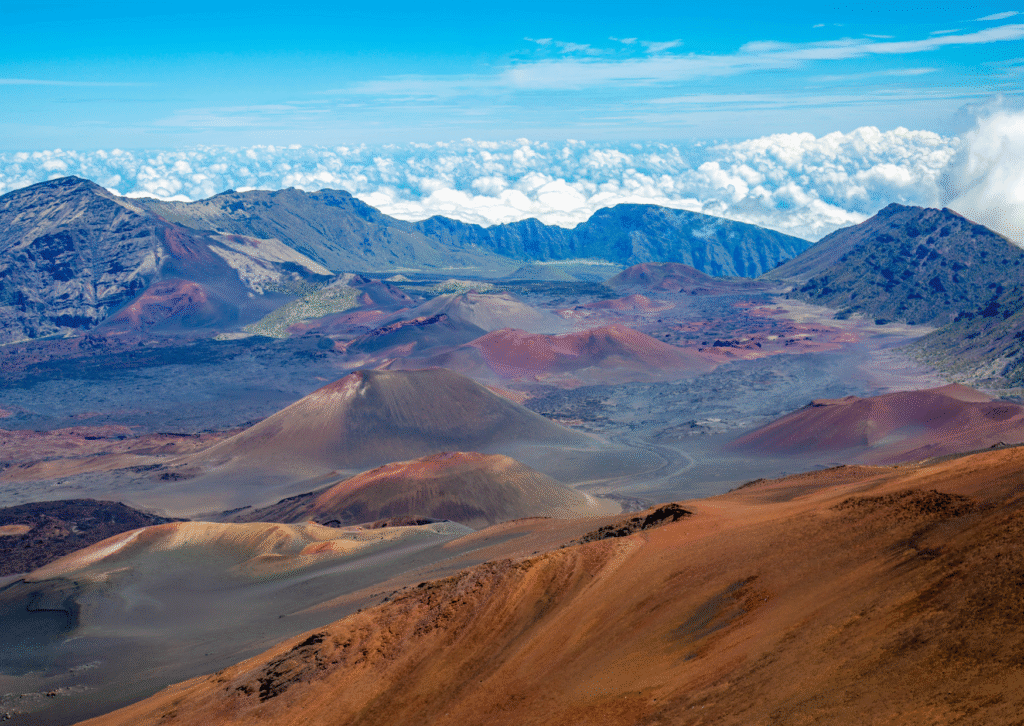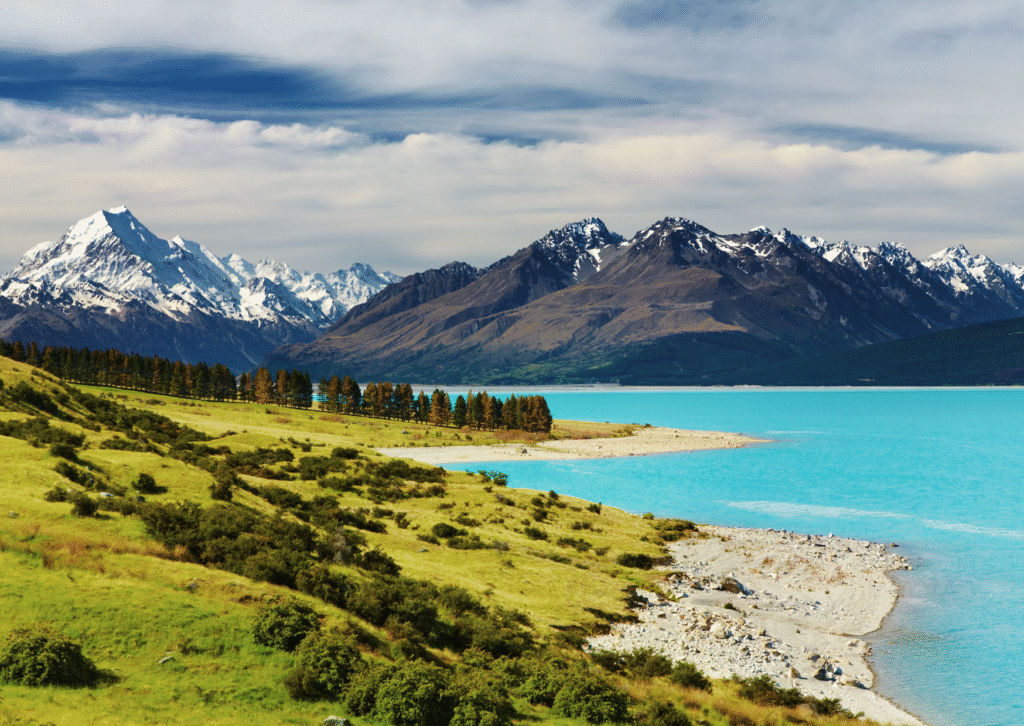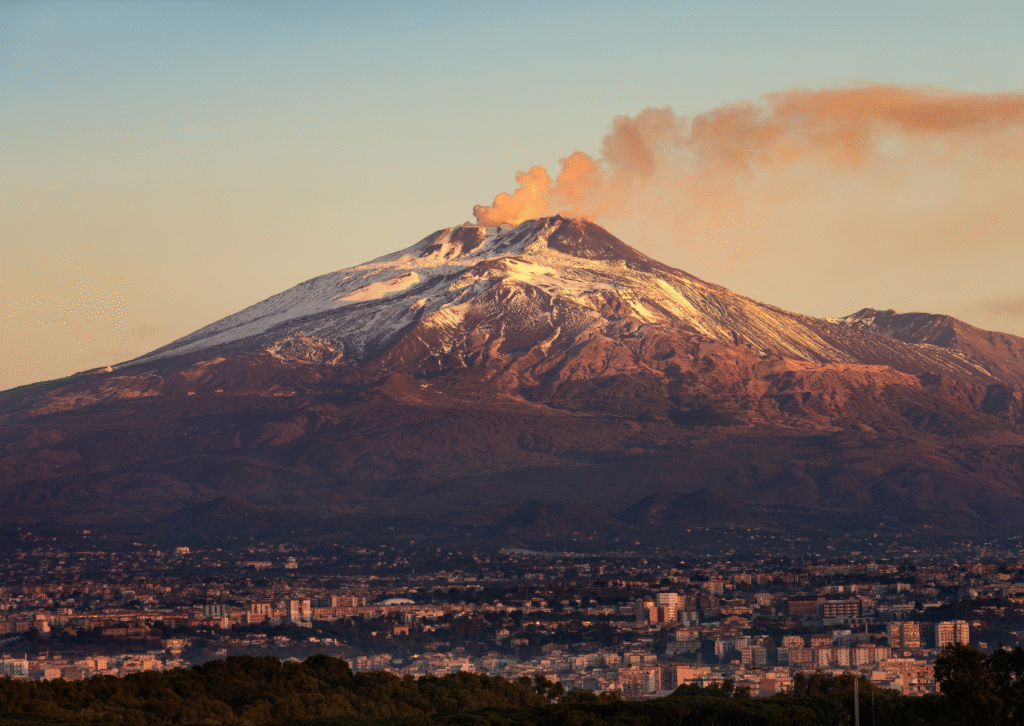Mountains have a timeless quality. They stand tall as the storytellers of the Earth, silent, grand and very spiritual. These powerful summits have been seen as sacred places that connect heaven and earth by ancient civilizations all throughout the planet. For hundreds of years, sacred mountains have inspired tales, legends and pilgrimages. They range from the snow-covered Himalayas to the volcanic center of Hawaii.
If you’re a visitor who wants more than simply beautiful views if you want tales, spirituality and the pulse of human belief here are the world’s most sacred peaks you should see. Each one tells stories of gods, heroes and seekers who once sought meaning on their slopes.
Mount Kailash in Tibet

People often call Mount Kailash the spiritual center of the globe because it rises above the vast plateaus of western Tibet. Hindus believe that Lord Shiva lives there, Buddhists believe that it is Mount Meru, the center of the universe, while Jains and Bon followers believe that it is where heavenly freedom happens.
But what really makes Kailash stand out is not merely its height but also the fact that it hasn’t been climbed. No one has ever climbed to the top of it because they revere its holiness so much. Instead, pilgrims walk the Kora, which is a 52-kilometer path that goes around the peak. A lot of people think that finishing it will wash away all their sins.
People who have traveled say that the trip changed their lives. The thin air, the prayer flags that flutter in the wind and the boundless skies remind you that faith can be stronger than any mountain.
May to September is the best time to go.
Japan’s Mount Fuji

Mount Fuji is more than just a postcard picture of Japan. It is a symbol of purity, endurance and rebirth. It is perfectly symmetrical and always covered in snow. For hundreds of years, poets, priests and artists have been inspired by Fuji’s shape, which they perceived as a sign of the divine’s calm perfection.
Shintoists believe that Fuji is a living god and the residence of the goddess Sengen-Sama. Every summer, thousands of pilgrims make the trek, repeating prayers from long ago as they get up to the top, where the sun rises. This moment is called “Goraiko,” which means “the first light over Japan.”
For modern travelers, climbing Fuji is a spiritual and physical trip. The view from the summit, as the sun sets, is a beautiful reminder of how sacred nature is.
The best time to go is from July to early September.
Mount Sinai, Egypt

Mount Sinai is a rough peak in the middle of Egypt’s Sinai Peninsula that is full of faith. People think that here is where Moses got the Ten Commandments from God, which makes it one of the most important summits in Judeo-Christian history.
Going up Mount Sinai is like going back in time. Most people start their climb before dawn so they can see one of the most beautiful sunrises in the Middle East. As the first light of day breaks over the desert, you can see why so many prophets and pilgrims have come here to find peace.
St. Catherine’s Monastery, a UNESCO World Heritage Site, located at the base of the mountain. It protects old manuscripts and the famed Burning Bush.
The best time to visit is from October to April.
Mount Olympus in Greece

When Zeus threw thunderbolts from the sky, he did it from Mount Olympus, which was the mythical abode of the twelve Olympian gods. Olympus is a hiker’s heaven and a myth-lover’s dream since it rises steeply above the Aegean coast.
Olympus was more than just a mountain to the ancient Greeks; it was the home of the gods and the place where the realms of the living and the dead met. Today, traveling along its green trails and up its peaks that are covered in clouds feels like stepping into a myth.
The hike gives travelers great views of the sea, old ruins and the eerie quiet of the gods’ forgotten throne.
The best time to go is from June to September.
Haleakalā, Hawaii

Haleakalā is a dormant volcano on the island of Maui. Its name means “House of the Sun.” Hawaiian tradition says that the demigod Maui lassoed the sun from this peak to delay its voyage, which gave people longer days.
When the first light of day breaks over the crater, the image seems almost otherworldly. Many people who have been there say it was a spiritual awakening, a calm moment of connection between the ground, sky and soul.
Haleakalā is more than simply a mountain; it’s a living temple of Hawaiian spirituality that shows travelers that science and myth can live together in the light of dawn.
The best time to go is all year.
Mount Shasta, USA

Mount Shasta is one of the most legendary places in North America. Not only is it a dormant volcano that towers above Northern California, but it’s also a place where spiritual searchers, mystics and energy healers go to find peace.
People who believe in the New Age say that Shasta is a spiritual vortex, which is where the earth’s energy fields come together. Some people even think it shelters the lost city of Telos, which was home to an ancient civilization, under its icy slopes.
There is no denying that Shasta has a peaceful influence, whether you believe the myths or not. One of the most beautiful places in the US is the crisp air, alpine meadows and sparkling lakes.
The best time to go is from June to October.
Machapuchare, Nepal

Machapuchare is a mountain in the middle of the Annapurna range that looks like a fish’s tail. People in Nepal think it’s so holy that no one is allowed to climb it because it’s sacred to the god Shiva.
The mountain’s ban on climbing makes it even more mysterious. You may see amazing vistas of the Himalayas, lush woods and traditional Gurung settlements while hiking near Machapuchare. Every look reminds travelers of the holy connection between nature and respect.
For a lot of people, the heart of sustainable travel is to experience without conquering.
The best time to visit is from October to November or from March to April.
Mount Cook (Aoraki), New Zealand

Aoraki, which means “the cloud piercer,” is the Maori name for Mount Cook. Aoraki was a child who became stuck in his canoe with his brothers, according to mythology. Aoraki stood tall as the highest peak in the land when their canoe turned to stone. This eternally linked the spiritual and natural worlds.
People love Mount Cook not only because of its legend but also because of how beautiful it is. Aoraki/Mount Cook National Park is nearby and has glacier walks, stargazing under the southern skies, and a deep sense of peace.
This mountain is one of the most memorable in the world for people who want a mix of adventure and respect.
November to February is the best time to go.
Mount Taranaki, New Zealand

Mount Taranaki on New Zealand’s North Island rises in almost perfect symmetry, shrouded in clouds and old stories. According to Maori legend, Taranaki used to live in the middle of the island with other mountains. He moved away to the west after losing a fight for the love of a lovely mountain named Pihanga.
The Maori think of it as a living ancestor, and the Egmont National Park around it feels like it has a peaceful vitality. Visitors are urged to be quiet, not litter and be thankful for the land.
Taranaki has one of the most photogenic volcanoes on Earth, especially when it is reflected in the calm waters of Pouakai Tarn.
The best time to go is from December to April.
Mount Kilimanjaro in Tanzania

Mount Kilimanjaro is the highest mountain in Africa, but it’s also a spiritual emblem of strength and new beginnings. The Chagga people think that ancestral spirits protect it, and they view its glaciers as precious gifts from the gods.
People often say that climbing Kilimanjaro is a test of willpower. You travel through rainforests, alpine meadows and ice plateaus, which means you are not only going through different climates but also through the layers of your own willpower.
The vista from the top of Uhuru Peak at daybreak is more than just a view; it’s a moment of clarity. A lot of climbers believe it alters them for good.
The best time to go is between January and March and June and October.
Mount Roraima, Venezuela

Mount Roraima is mystical and unearthly. It is on the borders of Venezuela, Brazil and Guyana. The flat top of the mountain gave Sir Arthur Conan Doyle the idea for his book The Lost World.
The Pemon people, who are native to the area, believe that Roraima is the mother of all waters and a holy spot where spirits live. The mountain seems like a fortress and there are waterfalls all around it that drop hundreds of meters into the rainforest below.
When you hike to the top, it feels like you’re on another planet. It’s misty, full of unusual plants and quiet.
The best time to visit is from December to March.
Mount Etna, Italy

Mount Etna, Europe’s most active volcano, has been erupting for thousands of years. People in the area have always thought it was home to gods and giants. The Greeks thought that Hephaestus, the god of fire, made his weapons in the ground here.
People from all over the world come to see Etna, even though it can be dangerous. Seeing molten lava glow against the night sky is a humbling reminder of how powerful nature is and how it creates and destroys things again and over again.
Vineyards, olive trees and communities are scattered throughout its rich slopes. Life goes on peacefully there, even though the mountain is known for being fiery.
The best time to go is from April to November.
Every mountain has a story to tell. Some resonate with the prayers of pilgrims, while others vibrate with the heartbeats of tales. These sacred peaks, including Mount Fuji’s stillness, Kailash’s mystery and Etna’s fire, remind us that travel isn’t simply about moving around, it’s about finding meaning.
You don’t just observe nature when you stand in front of a sacred mountain. You also experience history, culture and the spiritual pulse of humanity. So the next time you go on an adventure, don’t just climb a mountain; listen to it. It might tell you a story that goes back to the beginning of time.
